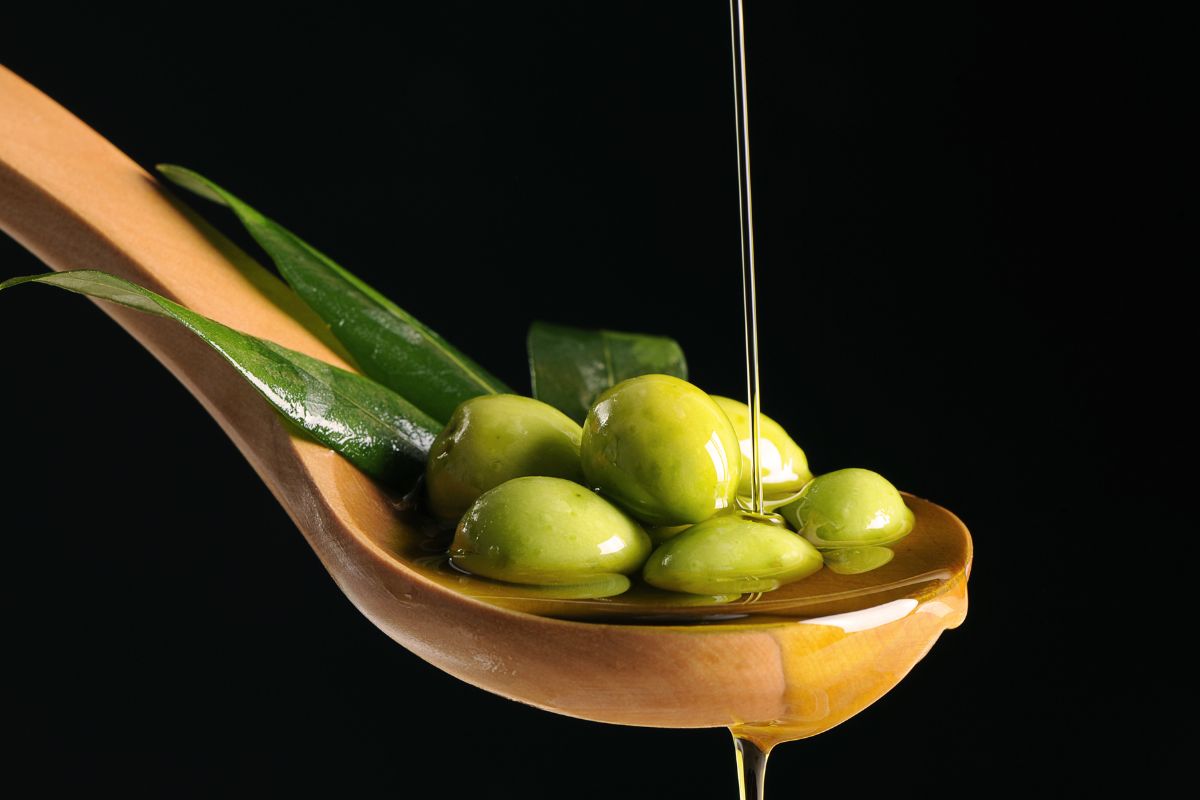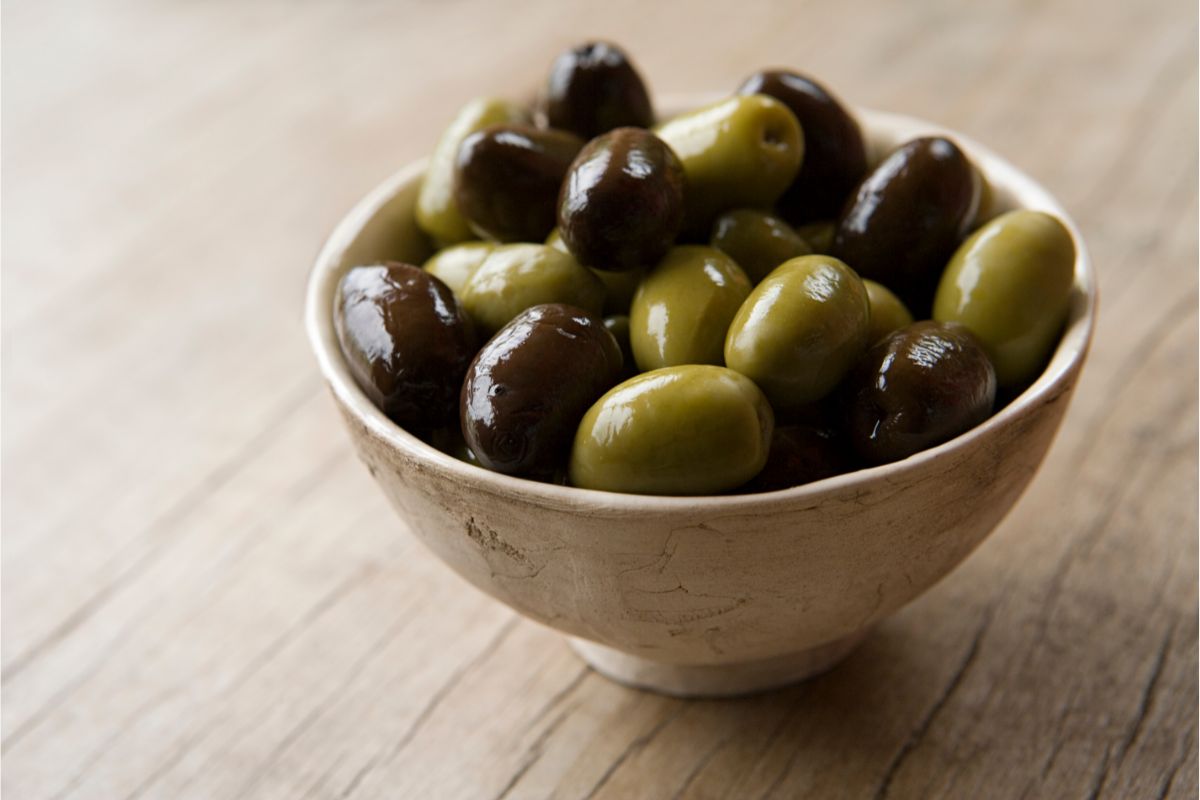Many of us love eating olives, with their complex blend of saltiness and sweetness, but not all of us know whether they’re actually classified as either a fruit or a vegetable. It’s a common confusion, but one that we can easily clear up for you!
To put it simply, olives are fruits. This may surprise you, because olives are cooked like they’re a vegetable, but the truth is that they are classified as a type of fruit instead.

However, there is so much more to learn about olives and the reason that they’re classified as fruits rather than vegetables, and we’ve got all the answers you need in our informative guide below!
Are Olives A Fruit Or A Vegetable?
Olives are popular all over the world, but many people don’t actually know whether they’re classified as fruits or vegetables. This
confusion is nothing new, because the same thing happens to other popular foods, such as tomatoes, cucumbers, and peppers. On top of that, olives are prepared and cooked as if they were a vegetable, which confuses matters further.
Well, the answer is that olives are actually a type of fruit! Despite their similarities to some vegetables, they are in fact considered fruit. But why?
Why Are Olives Classified As Fruit?
Given that olives are prepared and cooked in ways that you would traditionally do with a vegetable, and certainly not a fruit, it’s quite a surprise to find that olives are considered fruits instead.
However, this classification is all because of where olives come from.
You might not know it, but olives are found on trees, where they come from a flower on the branches. This is the reason that olives themselves have been classified as fruit, because fruits come from the mature ovaries of plants.
Since the plant’s ovary is found in the flower, this means that olives are fruit.
On top of that, the fact that olives contain seeds also helps to classify them as fruit. The pit that is found in each olive is actually the seeds of the Olea europaea tree, which is the name for the trees that olives come from.
While it might seem odd to cook a fruit, that’s what you’re technically doing when you cook olives in any number of ways. If you think about it, the same goes for tomatoes and peppers, two other kinds of fruits that are commonly cooked – and commonly mistaken for vegetables!
Are Other Fruits Confused For Vegetables?
People are not alone in regularly confusing olives for vegetables rather than the fruits that they are, and the same often happens to a wide variety of other popular foods.
For example, tomatoes are probably the most common fruit to be confused for a vegetable. When people think about fruits, they usually think of things like bananas and oranges.
Putting tomatoes in the same league as these certainly seems odd, but maybe it shouldn’t be as odd as you think? After all, tomatoes are sweet and sharp, and plenty of fruits are sweet in their flavor.

On the other hand, peppers are also classified as fruits, even though they’re regularly confused for vegetables.
The main reason for this confusion is, like with olives and tomatoes, the fact that they’re prepared and cooked like they’re vegetables. However, they’re fruits!
Additionally, pumpkins and squashes are also deemed fruits rather than vegetables, which confuses some people. Like tomatoes, this is a confusion that perhaps shouldn’t be there, because both types of food are so sweet.
You might be shocked to learn that green beans are actually considered a fruit, rather than being a vegetable! We certainly found this the most surprising of all these foods.
After all, they’re green and healthy! Those are characteristics typically associated with vegetables, like broccoli and peas. However, green beans are pretty sweet, and they’re considered a fruit.
Finally, other fruits that are regularly confused as being vegetables include:
- Avocado
- Eggplant
- Okra
- Cucumber
What Do Olives Contain?
Olives are a popular fruit that’s enjoyed by many people, either in dishes or even enjoyed in a cocktail, but what do they actually contain?
Well, for one thing olives are high in both their fat and salt (sodium) content. On the other hand, olives are low in their carbohydrate content, and most of those carbs are fiber to begin with.
Meanwhile, olives are also a good source of vitamin E, which is an antioxidant that many high-fat plant foods are typically high in content-wise. Olives also contain calcium, while black olives are a good source of iron.
Are Olive Fats Healthy?
We just mentioned that olives have a high fat content, but is that such a bad thing? You’ll be interested to learn that, in the case of olives, these are unsaturated fats. These are the healthier type of fats out there, and olives are a good source of them.
As a result, eating olives can help you in some ways, providing you with helpful healthy fats and other good nutrients!
The Best Ways To Enjoy Olives
Besides enjoying them on their own, there are a whole variety of different ways you can enjoy your delicious olives!
For one thing, olives make a great pairing with cheese. The olives offer a flavor that ranges from salty to sweet, which pairs really well with the earthiness and creaminess that you can get from all types of cheeses.
On the other hand, olives go really well with fish too. If you’re cooking a dish with fish in it, then make sure to add a few olives to the mix, whose saltiness and sweetness combines really well with the tender fish.
Similarly, olives go really well with poultry, so they’re a must-add fruit to any chicken dishes you’re making.
Another great dish to try is tomato pasta with some olives and capers thrown into the mix.
Final Thoughts
Though they’re prepared and cooked like vegetables, olives are actually fruits! This is because they come from the flowers of olive trees and they contain seeds.
- How To Reheat A Cheesesteak - November 5, 2023
- What Are Three Must Have Kitchen Knives? - September 22, 2023
- How To Protect Edges Of Pie Crust - June 15, 2023








